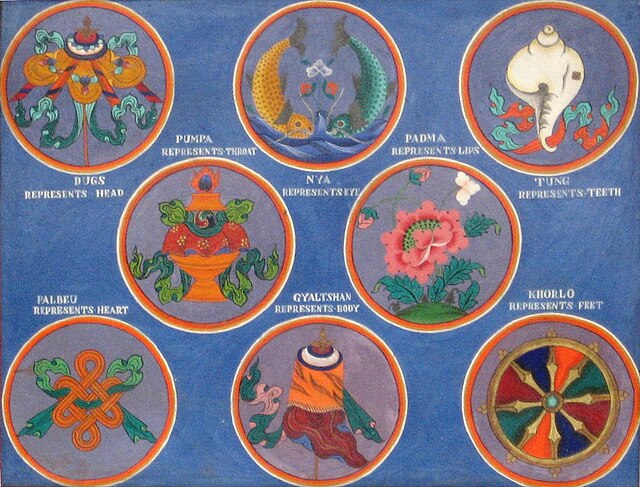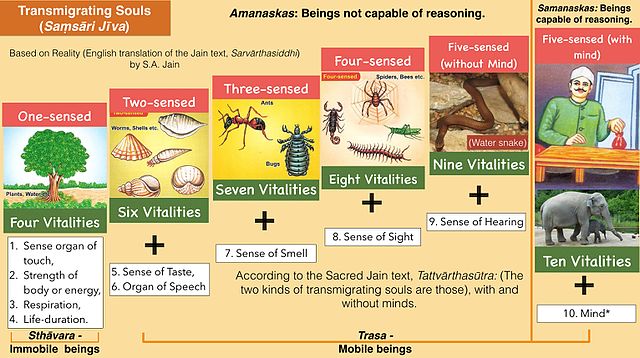The Ashtamangala is a sacred suite of Eight Auspicious Signs featured in a number of Indian religions such as Hinduism, Jainism, and Buddhism. The symbols or "symbolic attributes" are yidam and teaching tools. Not only do these attributes point to qualities of enlightened mindstream, but they are the investiture that ornaments these enlightened "qualities". Many cultural enumerations and variations of the Ashtamangala are extant.
Ashtamangala: first row (left to right): parasol, pair of golden fish, conch; second row: treasure vase, lotus; Last row: infinite knot, victory banner and wheel.
Carved wooden door with 8 auspicious signs (Ashtamangala) in Nepal
Auspicious symbol – conch Rewalsar
Auspicious symbol. Two Golden Fish. Likir Monastery, Ladakh
Jainism, also known as Jain Dharma, is an Indian religion. Jainism traces its spiritual ideas and history through the succession of twenty-four tirthankaras, with the first in the current time cycle being Rishabhadeva, whom the tradition holds to have lived millions of years ago, the twenty-third tirthankara Parshvanatha, whom historians date to the 9th century BCE, and the twenty-fourth tirthankara Mahavira, around 600 BCE. Jainism is considered an eternal dharma with the tirthankaras guiding every time cycle of the cosmology. The three main pillars of Jainism are ahiṃsā (non-violence), anekāntavāda (non-absolutism), and aparigraha (asceticism).
The 58.8ft high monolithic statue of Bahubali built in 981 CE
Classification of Saṃsāri Jīvas (transmigrating souls) in Jainism
Rebirth loka (realms of existence) in Jain cosmology.
Division of time in Jain cosmology.








